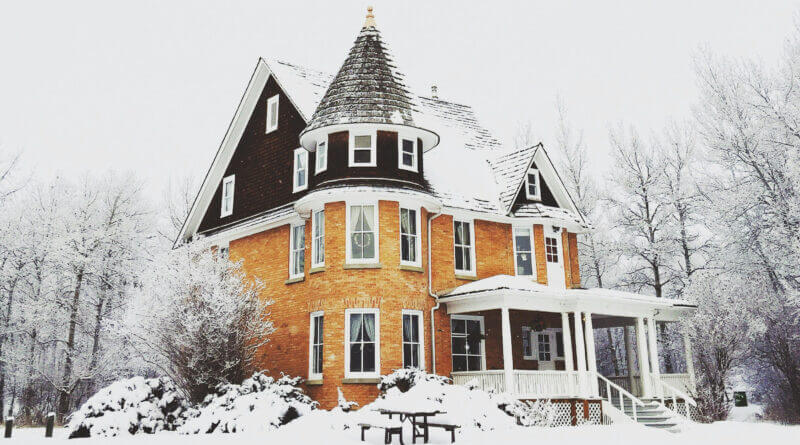Harris: Weatherizing your home to save money
By Charlestien Harris
Burrrrr… Mr. Winter is already flexing his muscles with this early cold snap! I don’t know about you, but I can feel the temperature changing, which lets me know winter is on its way. Usually, during the winter months, utility bills can get pretty steep because we tend to use more energy when the weather changes. One of the most efficient ways to help save money is to weatherize your home.

Weatherization refers to home improvements that reduce the energy we use to make our homes more comfortable, including moisture control, air sealing, ventilation, and upgrades to insulation, doors, and windows.
Let’s take a look at some ways you can weatherize your home to make it more cost-effective and energy-efficient.
- Tip #1: Try adding door sweeps and weatherization strips.
I bet you didn’t know that allowing as little as a 1/8-inch gap around the front and back doors lets in as much air into the home as a small window open halfway. To fix this issue, it is recommended that something as simple as attaching door sweeps and adding weather strips on exterior doors can decrease this air intake. Taking this action is one of the most affordable ways to weatherize your home. Installation only takes a few minutes, and it effectively seals drafts. How do you know you need it? Lay a sheet of paper on the door frame and close the door on it; if the piece of paper comes out easily without tearing, that means you need a door sweep and/or weather strips. - Tip #2: Try changing your ceiling fans to rotate the correct way.
Many only think of ceiling fans as a summer tool for cooling, but a ceiling fan can be an important tool in your home weatherization tips toolbox year-round. In the winter, it can also be used to rotate airflow so that heat rising into a high ceiling is blown back down to where it can benefit the area of the house where the people are. Running your ceiling fans in reverse will make you feel warmer, which allows you to lower your thermostat temperature by 3-5 degrees and cut back on the amount of energy your furnace consumes. - Tip #3: Try checking your ventilation and cleaning or replacing your central heating filters.
Ventilation can have a big impact on a home’s comfort level. It can help with cooling and dealing with moisture. Improving ventilation can allow you to improve the temperature in your house without seeing an increase in your energy bills. Checking filters is on ENERGY STAR’s monthly home weatherization tips checklist. ENERGY STAR recommends checking filters monthly and changing them every three months, at least. Over time, these filters get clogged with all the dirt, dust, and allergens they capture. A dirty air filter slows down airflow and makes a system work harder, thereby wasting energy. - Tip #4: Try wrapping your water heater, if needed.
Water heater insulation could reduce standby heat losses by 25 to 45 percent and save you about 7 to 16 percent in water heating costs. Insulation blankets help keep the water in your tank warm and reduce energy lost during the water-heating process. Uninsulated water heater tanks or those valued at less than R-24 lose heat and are less efficient. Be sure to check the R-value on your tank sticker. This number indicates how well the material your tank is made of resists heat flow. The higher the R-value, the better. You can find easy-to-install, insulating pre-slit pipe covers at most home improvement stores. An insulating jacket is a low-cost way to improve the efficiency of your water heater. It can pay for itself in lower energy bills in the first year. - Tip #5: Try weatherizing your windows.
Air leaks from cracks and gaps in your windows disrupt the perfect warm climate of your heated home. Up to 30 percent of your home’s heating is lost through windows, making it harder for your HVAC unit to achieve your set temperature. You can take these steps to prepare your windows:
- Caulking – Apply caulking to cover holes and cracks around doors and non-movable window parts such as window frames.
- Weatherstripping – Weatherstrip the movable parts of the windows to prevent air leaks. Apply the strip between the window frame and sash. Make sure it does not interfere with the window operation.
- Install film insulation – To double the protection in colder months, you can install film insulation on your window glass. The film increases your window’s ability to retain heat.
- Install draft stoppers – Place draft stoppers at the bottom of a window frame to prevent cool air from seeping in. Then shut the window tightly.
- Hang shades or draperies – Finish the process by hanging insulated shades or draperies to reduce heat loss during cold winter nights. During the daytime, roll them up and take full advantage of the sunlight.
There is nothing wrong with wanting to save money in every area of your finances. Saving energy dollars can have a huge impact on how much money you will have to spend or save in other areas of your finances, such as setting aside money to start an emergency fund. These cost-saving measures can help you to be more budget-conscious about where your money is going and how you spend or save it. So, let’s not waste more time! Gather your supplies and start working while you still have plenty of time before the winter season sets in!
For more information on this and other financial topics you can email me at Charlestien.harris@banksouthern.com or call me at 662-624-5776. Until next week—stay financially fit!
Charlestien Harris is our financial contributor, a financial expert with Southern Bancorp Community Partners whose articles are seen in a number of publications around the region.






